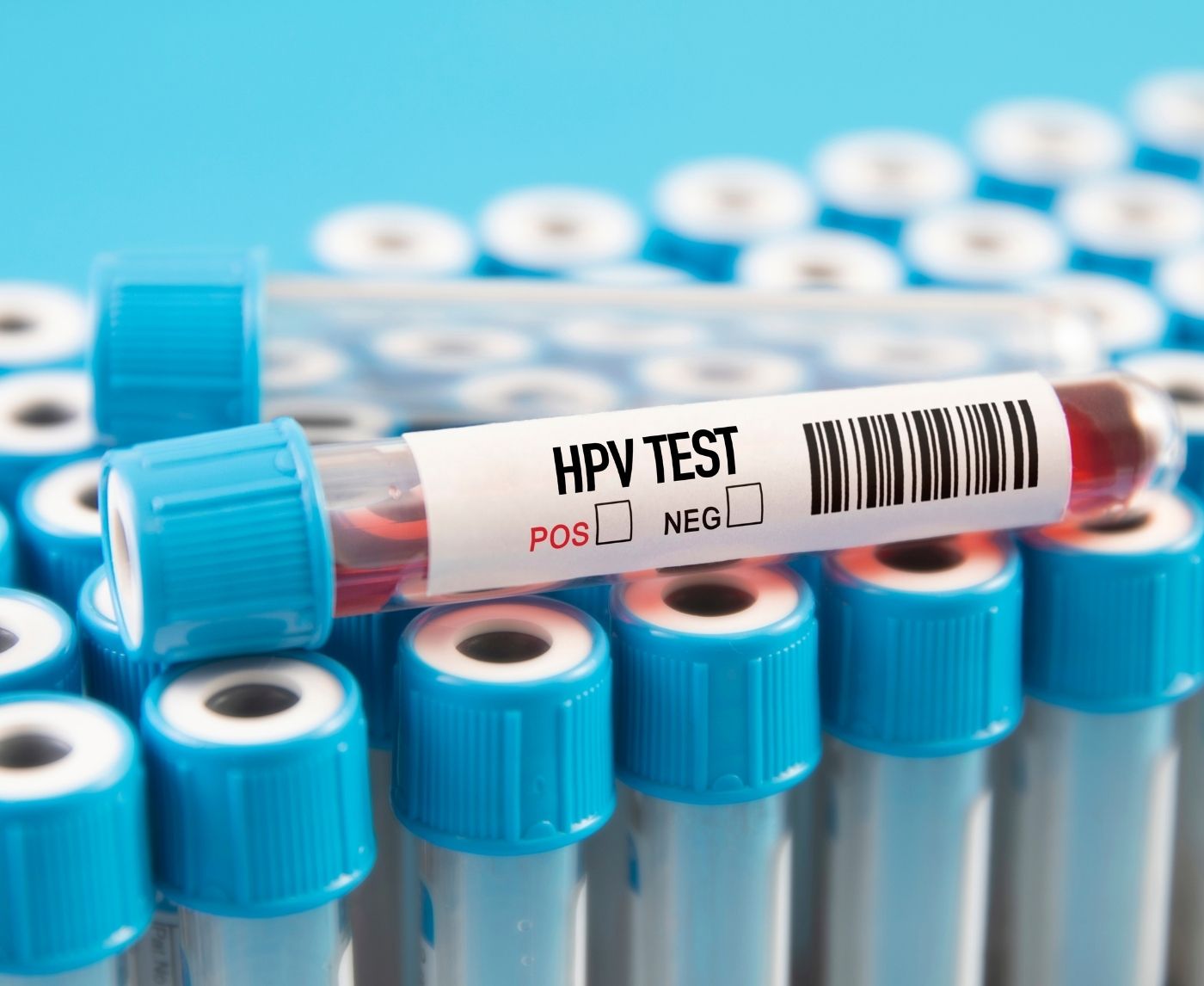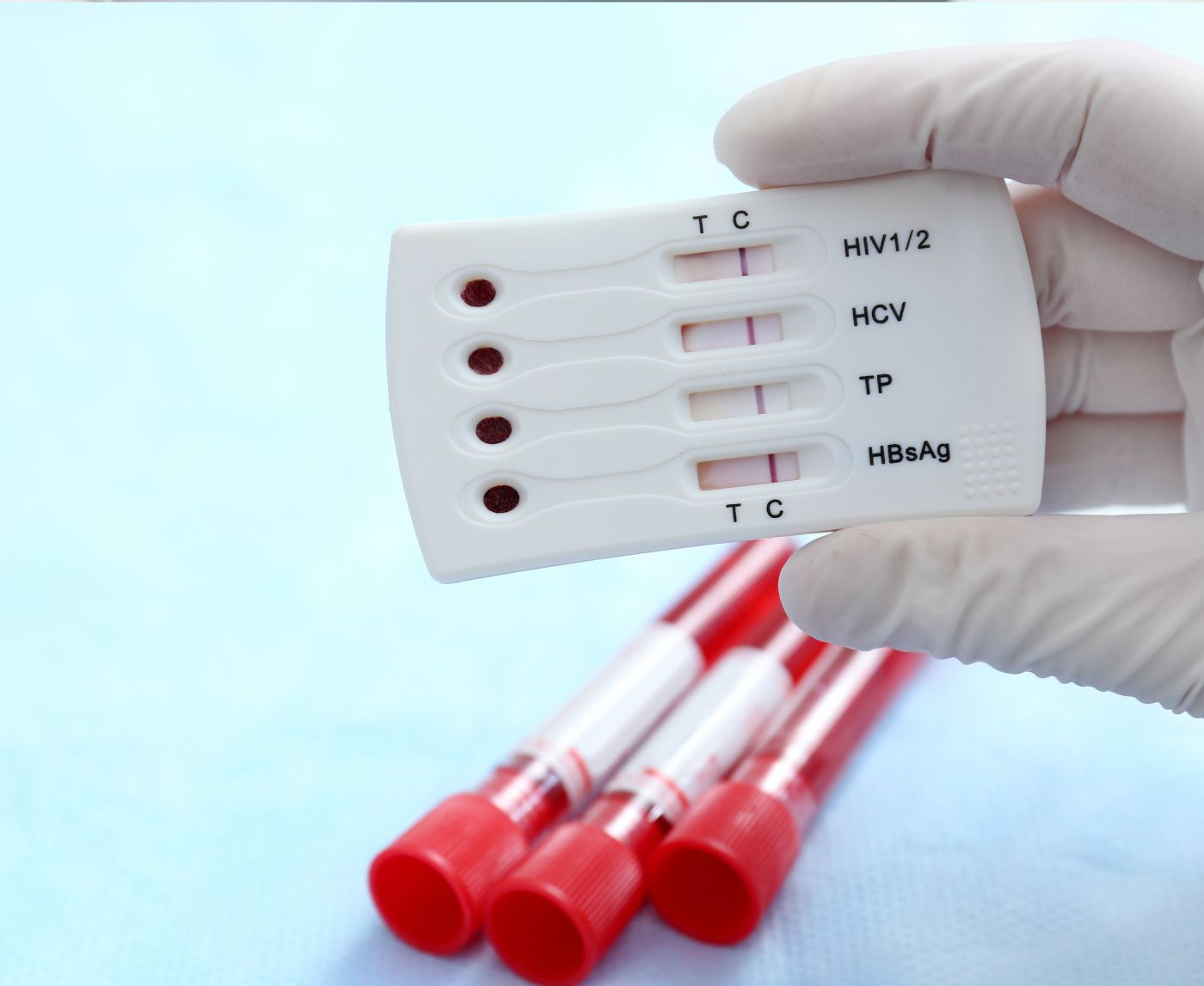Think You Have HIV? Why Testing Too Early Can Backfire
Quick Answer: The best time to test for HPV is between 6 weeks to 3 months after potential exposure. Testing earlier is possible, but results may miss new infections due to the virus’s long incubation period.
Who This Article Is For, and Why It Matters
Maybe you just started seeing someone new. Maybe you hooked up once, and now you’re second-guessing everything. Maybe you're deep in Reddit threads trying to decode what “wait three months” really means. This article is for all of that. For the quiet panic, for the ones who have no symptoms but still feel that something might be off. For those who’ve already been burned by a false negative and don’t want to go through that again.
It’s also for the people who feel stuck in the healthcare gap, no time, no insurance, or just no desire to sit in a waiting room explaining their sex life to a stranger. Testing for HPV isn’t always straightforward. Unlike other STDs, there's no universal screening timeline, and many people don’t even know that HPV doesn’t have a rapid test you can grab at a pharmacy. That’s why we made this. You deserve to know how long to wait before testing, and what kind of test will actually tell you something useful.

People are also reading: Faint Lines, False Negatives, and Trichomoniasis: What You Need to Know
Wait, What Even Counts as an HPV Test?
This is where most people get tripped up. There’s no swab you can do at home to “check for HPV” like you would with chlamydia or gonorrhea. Testing for HPV relies mostly on DNA-based lab methods, and it’s usually done through cervical swabs during a Pap smear. But that’s only part of the story. For people without a cervix, especially men, routine HPV testing isn’t even offered unless you're in a high-risk group (like men who have sex with men or people with HIV).
In clinical settings, there are two main ways HPV is usually detected:
Table 1. Types of HPV tests and who they’re used for. Not everyone has access to routine screening, especially men and nonbinary folks.
It is saying that you can't just decide when you want the test for HPV. It depends on your body, your symptoms (or lack of), and what your risk is for getting sick. That is why it is important for you to recognize when you should test.
The Window Period Problem: Why Timing Changes Everything
Here’s the real kicker with HPV: it can sit silently in your system for weeks, months, or even years before it becomes detectable, or causes any symptoms. That silence isn’t a gift; it’s a trap. Because if you test too early, there might not be enough viral DNA for even the most sensitive test to catch.
Let's take that apart. The window period is the time between when you were exposed to HPV and when a test can reliably find it. The incubation period is how long it takes for symptoms, like genital warts, to show up, if they do at all.
In many cases, HPV has no visible symptoms, and most people who test positive didn’t feel anything at all. That makes the timing of your test even more important, because it may be the only chance you have to know what's really going on.
Table 2. Understanding how timing impacts HPV testing and detection. Just because symptoms don’t show up doesn’t mean the virus isn’t there.
This is why so many people test “negative,” feel relieved, and then later test positive, either because the test was done too early, or because the virus reactivated after lying dormant. That doesn’t mean the test was wrong. It means your timing was off.
A Week Later: Is It Too Soon to Test for HPV?
Yes. If it’s been under two weeks since exposure, it’s too early to test. HPV DNA doesn’t build up in detectable amounts right away. In most cases, it takes at least 6 weeks for enough of the virus to appear in cervical or anal cells. Testing earlier than that often results in false negatives, not because the test is broken, but because there’s nothing to detect yet.
Take Maya, 28, who hooked up with someone new after months of celibacy.
“We used condoms, but I still couldn’t stop thinking about it afterward,” she said. “I booked an online Pap and HPV test through a mail-in service just 10 days later. It came back clear. I was so relieved.”
That was until her annual Pap six months later flagged high-risk HPV.
Maya’s early test wasn’t a scam. It was just premature. The virus hadn't shown itself yet. “If I had known to wait, I wouldn’t have let my guard down so fast,” she says now.
HPV doesn’t always follow predictable patterns. But you can improve the odds of accurate detection by giving your body enough time to respond to the virus and for tests to capture the evidence.
Let’s Talk Real-Life Scenarios (Because This Stuff Is Messy)
Imagine this: You had oral sex with someone you don’t know well. No penetration, just mutual touch and maybe some grinding. A week later, your throat feels weird, and you're wondering: *Could that be HPV?* Or you’re a guy who had anal sex with a new partner, and now you're stuck Googling, “can men even get tested for HPV?” These aren’t hypotheticals, they’re the kinds of questions flooding forums, telehealth platforms, and late-night texts to friends who once mentioned something about Pap smears.
The truth? HPV can be transmitted through skin-to-skin contact. Not just through penetration. Not just through unprotected sex. Genital contact, oral sex, sharing toys, all of these can pass the virus. And because HPV is so common, most people don’t know who gave it to them or when they got it.
What matters most isn't *how* it happened, but when to act. Whether your exposure was last week or last month, here’s what to consider:
Table 3. Exposure timelines and when HPV testing is most effective. The type of sexual contact impacts when HPV becomes detectable, especially for men and people without a cervix.
Timing isn’t just about science, it’s about peace of mind. When you test too early and get a negative result, it feels like relief. But it’s shaky ground. Because if that result was a false negative, it can delay real care or risk unknowingly exposing others.
At-Home vs. Clinic vs. Mail-In Lab: Which HPV Test Is Right?
Here’s the good news: testing is no longer one-size-fits-all. Depending on your anatomy and risk level, you may have multiple options, but each comes with pros and trade-offs. What matters most is understanding what you’re getting and what it can (or can’t) tell you.
Let’s meet Sarah. She’s 32, lives rural, and doesn’t feel safe going to the local clinic, everyone knows everyone. She chooses a mail-in HPV DNA test that uses a self-collected cervical swab. For her, privacy trumps immediacy. Then there’s Ren, 26, who just moved to a new city and hasn’t established care yet. They find a queer-affirming clinic offering same-day HPV screening alongside a full STI panel.
There’s no universal “best” test, it’s about what fits your body, your life, and your stress level. But knowing the differences helps you choose with eyes open:
Table 4. Comparing your HPV testing options by privacy, speed, and use case. Not everyone will have access to all these options, and that’s part of the problem.
For men, this is especially frustrating. Unless you have symptoms or a provider willing to offer an anal HPV test, you may not be able to screen at all. That’s not just a medical gap, it’s an emotional one. If you're in that camp, it's not your fault. The system simply hasn't caught up yet.
Don’t Just Test, Plan a Retest
Here’s a phrase we don’t hear enough: a negative test isn’t the end of the story. Especially with HPV. Because even if you get a clean result now, there’s a solid chance the virus is still incubating or lying dormant. That’s why follow-up testing matters, especially if you had a known exposure, or if your test happened within the first 6–8 weeks post-contact.
Alex, 33, tested negative on a Pap and HPV co-test after a one-night stand with an ex. “I felt safe, but something told me to check again later,” she said. Three months after that test, a follow-up showed high-risk HPV. It hadn’t been a mistake the first time. It had just been too early.
So what’s the plan? Most experts recommend a second test around 12 weeks post-exposure if you had reason to test earlier. And if that comes back negative again, and you remain symptom-free, you're probably in the clear. Probably. Because, frustratingly, nothing with HPV is ever guaranteed.
If your head keeps spinning, peace of mind is one test away. Whether you’re due for a retest or just want clarity you can trust, you can order a discreet at-home HPV test here or explore options with a full panel Combo STD Home Test Kit.

People are also looking for: When to Get Tested for Trichomoniasis After a Risky Hookup
False Positives, False Negatives, and the Mental Whiplash in Between
HPV messes with your head because it's both common and invisible. Most people who test positive never had symptoms. And most people who think they have it, don’t. That confusion is made worse by a simple but overlooked reality: test results aren’t always as clear as they look.
Let’s get honest. A “negative” can mean the virus is truly absent. But it can also mean the test didn’t pick it up yet. A “positive” might mean current infection. Or it could mean your body already cleared it, but fragments of DNA remain detectable. Testing too early, using a poor sample, or even self-swabbing incorrectly can all skew results.
And then there’s the emotional aftermath.
Dev, 35, tested positive for HPV after an asymptomatic stretch.
“I panicked. I thought I was sick, contagious, unclean. I told my partner, and it nearly ended us,” he said. A follow-up test five months later came back negative. His doctor believed it had been a transient infection, likely cleared naturally.
“It made me question everything,” he said. “Was I ever positive? Or did I just ruin something over a virus most people carry?”
That’s the emotional cost of poor timing and lack of context. HPV tests are most accurate when taken at least 6–12 weeks after exposure, and ideally as part of a longer-term screening routine, not a panic move after a hookup.
When Symptoms Don’t Help (And Partners Can’t Either)
Another HPV frustration? Symptoms aren’t reliable. You can have HPV for years with no visible signs. Or you can develop genital warts and still test negative on a DNA test. There’s no direct one-to-one map between exposure, symptoms, and test results. And partners? They’re no better as crystal balls. Just because they tested negative doesn’t mean you’re in the clear, or vice versa.
Sam, 24, found out her long-term partner had tested positive for high-risk HPV during a routine Pap. “I freaked out. We'd been monogamous. I blamed myself, then him. But it turned out he probably got it before we ever met. It just took years to show up.” HPV doesn’t play by relationship timelines. It lingers, goes quiet, then reemerges. It’s not a lie, it’s latency.
This is why testing needs to happen on your timeline, not someone else’s. Even if your partner was recently screened, your body and your immune system are their own ecosystem. Use their results as context, not as your excuse to skip care.
Privacy, Delivery, and Emotional Real Estate
We don’t talk enough about the logistics of testing, not just the science. Like what it feels like to be waiting for results while pretending you’re fine at work. Or trying to plan a trip while wondering if a package labeled “STD Test Kit” will sit on your porch in plain sight.
This stuff is heavy. And not everyone has access to a private bathroom, a steady mailing address, or a doctor they trust. That’s why many people choose at-home HPV test kits, not because they’re lazy or careless, but because privacy is survival. You don’t need to justify how or where you test. You just deserve options that don’t raise more barriers.
Shipping timelines vary, but most HPV kits arrive in 2–4 business days in discreet packaging. Results usually come within a week of the lab receiving your sample. No waiting rooms, no awkward explanations. Just data you can work with, on your terms.
And if you’re feeling overwhelmed by the timing math or still unsure what to do next? That’s okay too.
What If You Test Positive for HPV?
Take a breath. Seriously. A positive result for HPV isn’t a life sentence. It’s not a reflection of your choices, your worth, or your future. It means the test worked, and now you have information. Information is power. And most of the time, your immune system will clear the virus on its own within a year or two.
If your test shows high-risk HPV, your provider may suggest a follow-up Pap, colposcopy, or biopsy. That doesn’t mean cancer. It means they’re being thorough. And if it’s low-risk HPV (like the kind that causes warts), treatment usually involves topical solutions, freezing, or minor procedures, most done quickly and painlessly.
We talked to Luis, 29, who got a surprise HPV-positive result after a new partner encouraged him to test.
“I spiraled,” he said. “I thought, this is it. No one will want me again.”
But after speaking with a sexual health nurse, he felt empowered to take the next steps. “I realized how common it is. And how little we’re taught about it.” His partner? Still here. Stronger than ever.
If you need to talk to someone, or want your partner to test, too, know that discreet Combo STD Home Test Kits can help both of you move forward with clarity, not guesswork.

People are also reading: Herpes Symptoms but Negative Test? Read This First
FAQs
1. Can I test for HPV the day after unprotected sex?
Not really. It’s too soon for any test to pick up the virus. Think of HPV like a sneaky guest, it doesn’t always show up right away, and even the best tests can’t catch it while it’s still unpacking. Give it at least six weeks before testing, and expect to retest later if you were recently exposed.
2. How long does it take for HPV to show up on a test?
Most HPV infections take about 6 to 12 weeks to become detectable. But that’s not a strict clock. Some show up sooner, some later. If you’re testing for peace of mind after a recent hookup, plan to check once at the 6-week mark and again around 3 months to be safe.
3. Can I test negative and still have HPV?
Yup, and it’s more common than you think. Testing too early or using a less sensitive method can easily miss an early infection. That’s why timing (and sometimes a follow-up test) matters way more than a single result. Negative doesn’t always mean “not there.” Sometimes it just means “not detectable yet.”
4. What happens if I test positive for HPV?
First: pause. Breathe. It doesn’t mean you did anything wrong, and it definitely doesn’t mean you’re dirty or doomed. Most people clear HPV naturally within a year or two. If your test picks up a high-risk strain, your provider might schedule more testing or monitoring. But this is about prevention, not panic.
5. Can men even get tested for HPV?
Unfortunately, routine testing for men isn’t widely available unless they’re in a high-risk group. That sucks, we know. If there are visible warts, a provider can check those. But if you’re a man without symptoms, your best tool is vaccination, barrier protection, and staying in the know about your partner’s status.
6. Is there an at-home HPV test I can use?
Yes, if you have a cervix. Several FDA-cleared kits allow you to collect a cervical swab at home and mail it in. It’s the same kind of test many clinics use. Just follow the instructions carefully to make sure you get an accurate result. For men, at-home options aren’t widely available yet (unfortunately).
7. Should I retest if I got a negative result but I’m still anxious?
If you tested within a few weeks of exposure, absolutely. The virus may have still been below detection levels. A retest at the 12-week mark can give a much clearer picture. Also: your anxiety is valid. It’s okay to want confirmation, even if the science says you “should” be in the clear.
8. Could I give someone HPV even if I tested negative?
Possibly, yes. HPV can lurk quietly in your system and go undetected, especially if it’s in a latent phase. That’s part of what makes it so tricky. Using protection and staying up-to-date on vaccines are still some of the best ways to reduce your risk of passing it on, regardless of test results.
9. What’s the difference between a Pap smear and an HPV test?
Think of it this way: a Pap checks your cells (looking for early signs of trouble), while an HPV test checks for the virus itself. Many providers now do both at once, especially if you’re over 30. The combo gives a fuller picture of what’s going on, and what might happen down the road.
10. Is there anything I can do to protect myself from HPV besides testing?
Definitely. The HPV vaccine (like Gardasil 9) is a game-changer. It covers several high-risk strains and is recommended for most people up to age 45. Condoms help, too, though they don’t cover all areas. And regular screening if you have a cervix? Still the gold standard for catching issues early.
When the Calendar Isn’t Enough, Trust Your Gut
If there’s one takeaway from this entire guide, it’s this: timing matters, but so does listening to yourself. If you feel like something’s off, or you just want answers, get tested. But give your body time to give an accurate answer. HPV is tricky, slow-moving, and often symptomless, but it’s not unbeatable. Knowledge, screening, and empathy go a long way.
Don’t wait and wonder, get the clarity you deserve. This at-home combo test kit checks for the most common STDs discreetly and quickly.
How We Sourced This Article: We combined current guidance from leading medical organizations with peer-reviewed research and lived-experience reporting to make this guide practical, compassionate, and accurate. In total, around fifteen references informed the writing; below, we’ve highlighted six of the most relevant and reader-friendly sources.
Sources
1. WHO – HPV and Cervical Cancer Overview
2. Planned Parenthood – Understanding HPV
3. CDC — Cervical Cancer Screening
4. CDC — About Genital HPV Infection
6. American Cancer Society — HPV and HPV Testing
About the Author
Dr. F. David, MD is a board-certified infectious disease specialist who works to stop, diagnose, and treat STIs. He combines clinical accuracy with a straightforward, sex-positive attitude and is dedicated to making his work available to more people, both in cities and in rural areas.
Reviewed by: Amanda Lee, NP-C | Last medically reviewed: October 2025
This article is for informational purposes and does not replace medical advice.







